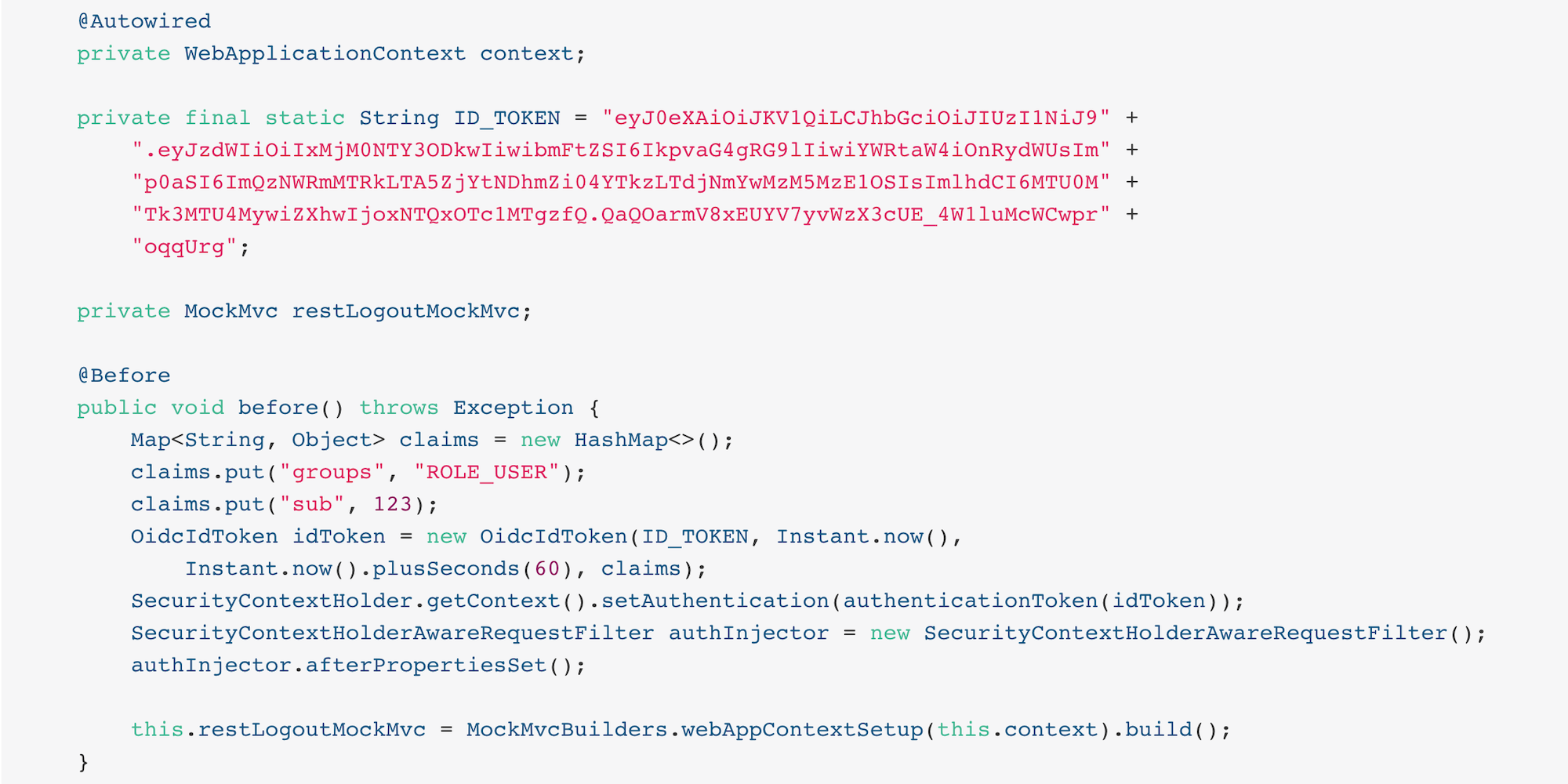Articles tagged testing
Spring WebClient for Easy Access to OAuth 2.0 Protected Resources

Spring ẀebClient was added as part of the reactive web stack WebFlux in Spring Framework 5.0. WebClient allows performing HTTP requests in reactive applications, providing a functional and fluent API based on Reactor, and enabling a declarative composition of asynchronous non-blocking requests without the need to deal with concurrency. One of its features is support for filter registration, allowing to intercept and modify requests, which can be used for cross-cutting concerns such as authentication, as...
Faster Spring Boot Testing with Test Slices

We know unit testing is a vital part of the software development process. We also know us developers love to debate techniques, frameworks, strategies, and how different layers and components need testing. Unit tests are the most valuable when they are stable, fast, and reproducible. Spring Boot is known to reduce boilerplate code and make development extremely efficient, but it can come with a cost when it comes down to the testing. Without prior optimization,...
Better Testing with Spring Security Test

Note: In May 2025, the Okta Integrator Free Plan replaced Okta Developer Edition Accounts, and the Okta CLI was deprecated. We preserved this post for reference, but the instructions no longer work exactly as written. Replace the Okta CLI commands by manually configuring Okta following the instructions in our Developer Documentation. Integration testing in modern Spring Boot microservices has become easier since the release of Spring Framework 5 and Spring Security 5. Spring Framework’s WebTestClient...
The Best Testing Tools for Node.js

Testing is an essential discipline for any non-trivial software project. With a dynamic language like JavaScript, testing is an absolute necessity. This post is on the best tools currently available for Node.js, but here’s a quick look at some of the many benefits of testing. Find bugs! Guard against future bug regressions. Document the expected functionality or behavior of software. Improve the design, quality, and maintainability of software. Refactor code with confidence. In this post,...
Make Java Tests Groovy With Hamcrest

My favorite way to test Java code is with Groovy. Specifically, writing tests in Groovy with Hamcrest. In this post, I’ll walk through how to test a simple Spring Boot application with these tools. Groovy is an optionally typed dynamic language for the JVM, and can be compiled statically. That is a mouthful and I’ll explain this as we go, but for now think of Groovy as Java with lots of sugar. Groovy is a...
Upgrading Spring Security OAuth and JUnit Tests through the 👀 of a Java Hipster

Using unit and integration tests to verify your code quality is an excellent way to show you care about your code. I recently did a bunch of work in the popular JHipster open source project to upgrade it to use the latest release of Spring Security. Spring Security 5.1+ adds OAuth 2.0 and OIDC as first-class citizens that you can configure with its elegant DSL (a.k.a. cool method chaining, a.k.a. the builder pattern). I’ve been...
Test Your Spring Boot Applications with JUnit 5

In this post, you’ll walk through how to build a simple Spring Boot application and test it with Junit 5. An application without testing is the proverbial Pandora’s Box. What good is your application if you don’t know that it will work under any condition? Adding a suite of tests builds confidence that your application can handle anything thrown at it. When building your tests, it is important to use a modern and comprehensive suite...
Build and Test a React Native App with TypeScript and OAuth 2.0

React Native is one of the most popular ways of creating mobile apps. Building on the success of React, it ties together native components for both Android and iOS using a shared JavaScript code-base. However, JavaScript has come under fire recently for not being type safe which can lead to a loss of developer trust. Enter TypeScript, which allows type annotations to be added to existing JavaScript code. One requirement of many mobile apps is...
The Hitchhiker's Guide to Testing Spring Boot APIs and Angular Components with WireMock, Jest, Protractor, and Travis CI
Writing apps with Spring Boot and Ionic (which is built on Angular) can be fun because both frameworks offer a good developer experience (DX). You change a file, save it, and the app automatically reloads with your changes. This feature is often called hot-reload and it’s a blissful way to develop. It’s so nice, it can cause you to forget about automating your tests. I’ll admit, writing tests is difficult to do. Writing the test...
Android Unit Testing Part IV: Mocking
This is the third of a four part series on Android Unit Testing. In the last two articles I discussed the general principles of having good tests and the way to run Android tests on JVM making them fast and how to make your code less coupled. This article will explain how to make tests isolated. We need to mock a dependency, inject it, and then modify our test to indicate that we are not...
Android Unit Testing Part III: Disintegration
This is the third of a four part series on Android Unit Testing. In the last two articles I discussed the general principles of having good tests and the way to run Android tests on JVM making them fast. This part will show how to make your Android code less heavily coupled. This is a preparation step to ensure that your tests are isolated from each other. We want to test each unit of work...
Android Unit Testing Part II: Escaping Dalvik's Hold
This is the second of a four part series on Android Unit Testing. In these posts, we’ll walk through the key steps engineers should take to make Android test fast by running them on JVM (versus running them on emulator). For background information on the importance of Android testing, visit Part I of the series. It appears that the need to run tests on an Android device or an emulator has concerned Android engineers for...